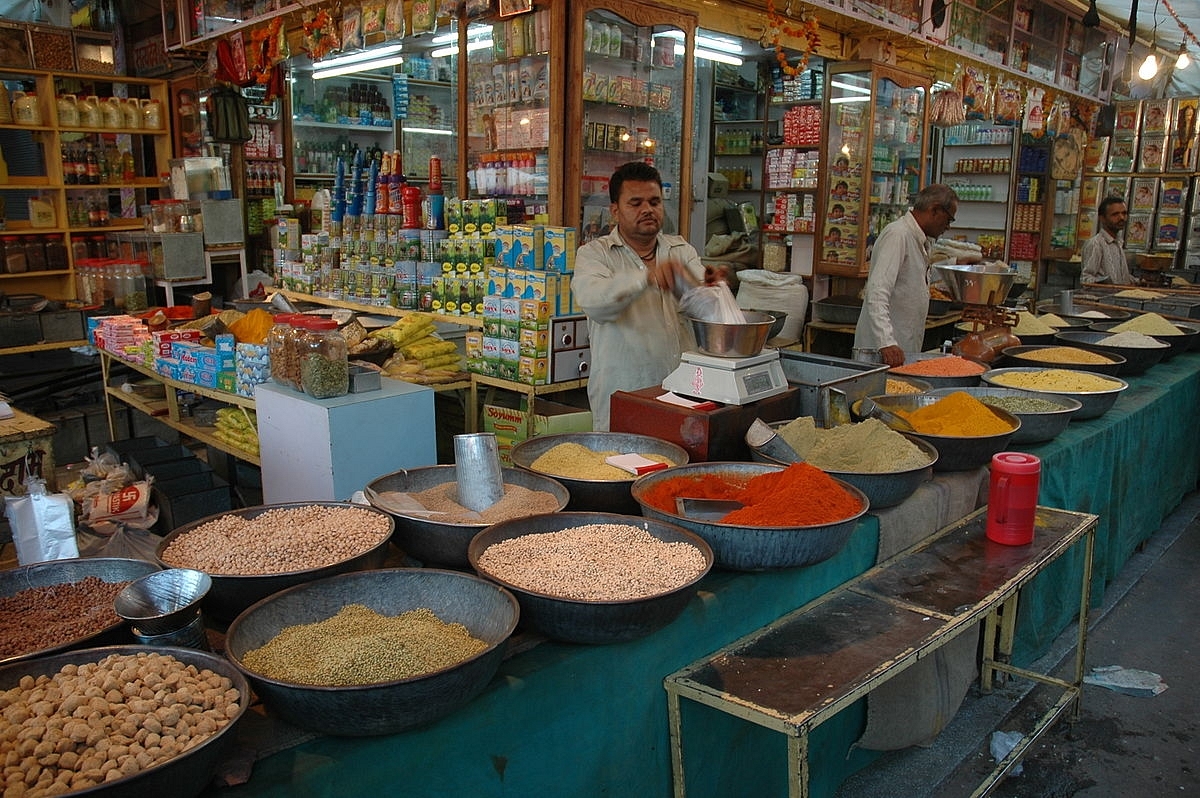Business
Indian Spice Market: Regional Brands And Local Players Dominate But Things Could Change Quickly As Big Names Plan Foray
- Regional brands and local players largely dominate the masala business. Customer stickiness and loyalty towards regional brands have prevented larger players from entering a new market with a big bang.
- Buying regional brands allows larger players to grow inorganically without having to invest years into building a new brand. At the same time, the brand can receive access to a wider distribution network and audience.

Spice market in Mumbai (Marc Shandro/Flickr)
Spices have been an integral part of Indian cuisine since times immemorial, yet, regional brands and local players largely dominate the masala business. However, larger companies have begun snapping up regional brands to grow their spice business footprint.
Increasing Number of Deals in the Space
Dabur recently bought a majority stake (51 per cent) in Badshah Masala Private Limited for Rs 587 crores. In 2021, Orkla ASA, which owns MTR Foods, bought a 68 per cent stake in Eastern Foods, which is valued Eastern at Rs 2,000 crores. East India-based Sunrise Foods Private Limited was acquired in 2020 in a deal valued at Rs 2,150 crores.
Apart from mergers and acquisitions, investors have become more interested in the space over the last two years.
In June 2020, Pushp Spices raised Rs 126 crore from A91 partners in exchange for 25 per cent of the company’s equity.
Investcorp pumped Rs 80 crores into Intergrow Brands Private Limited, which owns brands like Kitchen Treasure, in October 2019. At the beginning of 2022, there were rumours that Hindustan Unilever would buy MDH Masala, but the reports were denied.
Why is the Spice Business Attractive?
There are several reasons for the recent interest in the spice business.
According to Avendus, India’s spice market’s size stands at around Rs 67,500 crores, of which the organised market only accounts for 36 per cent or roughly Rs 25,000 crores.
Avendus estimated that the organised market would double to Rs 50,000 crores at a compounded annual growth rate of 16 per cent between 2020 and 2025. Even with the high growth rate, blended spices, which command gross margins upwards of 40 per cent, are expected to grow at 25 per cent.
The market for straight spices, which have lower value addition, is expected to grow much slower, at 12 per cent. With the shift from unorganised to organised and the general growth in spice consumption, the branded spice business has several tailwinds in its favour.
Unlike other packaged foods that can be discretionary purchases (chocolates, sweets, cornflakes, biscuits) or completely commoditised staple purchases(sugar, oil, flour), blended spices are a staple consumption item and aren’t entirely commoditised.
Often customers might prefer products of specific brands for specific dishes, allowing these brands to develop a degree of customer stickiness.
Barriers to Entry
It is estimated that customer stickiness allows producers of blended spices can command gross margins in the range of 40-50 per cent.
Everest and MDH command operating margins upwards of 35 per cent, indicating the strong pricing power these brands command. So far, large conglomerates and multinational companies have not made a deep impact on the spice business, with Everest being the only pan-India brand.
In part, customer stickiness and loyalty towards regional brands have prevented larger players from entering a new market with a big bang. Hence, these companies are possibly looking to enter the spice market through inorganic means.
In addition, the brand power commanded by these local players can be used to market other products in the regional markets. Further, the existing portfolios can be expanded to include other food-related items such as condiments and b suited for international cuisine.
There appears to be an increasing interest among players to buy up smaller regional brands. Reliance Industries, for instance, is said to be focusing on small regional brands that it can buy in order to create a strong FMCG portfolio.
Buying regional brands allows larger players to grow inorganically without having to invest years into building a new brand. At the same time, the brand can receive access to a wider distribution network and audience.
Overall the spice business offers strong profitability, growth opportunities, brand power, and recurring revenues, making it an attractive proposition for larger national players to enter. It is quite likely that the positive momentum in terms of mergers and acquisitions continues in the spice space.
Support Swarajya's 50 Ground Reports Project & Sponsor A Story
Every general election Swarajya does a 50 ground reports project.
Aimed only at serious readers and those who appreciate the nuances of political undercurrents, the project provides a sense of India's electoral landscape. As you know, these reports are produced after considerable investment of travel, time and effort on the ground.
This time too we've kicked off the project in style and have covered over 30 constituencies already. If you're someone who appreciates such work and have enjoyed our coverage please consider sponsoring a ground report for just Rs 2999 to Rs 19,999 - it goes a long way in helping us produce more quality reportage.
You can also back this project by becoming a subscriber for as little as Rs 999 - so do click on this links and choose a plan that suits you and back us.
Click below to contribute.
Latest